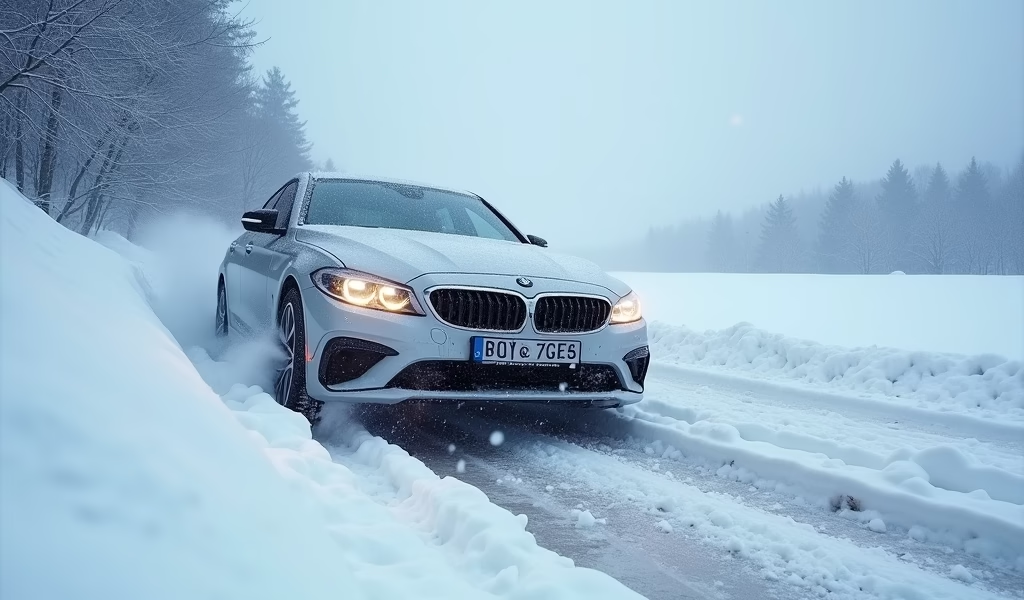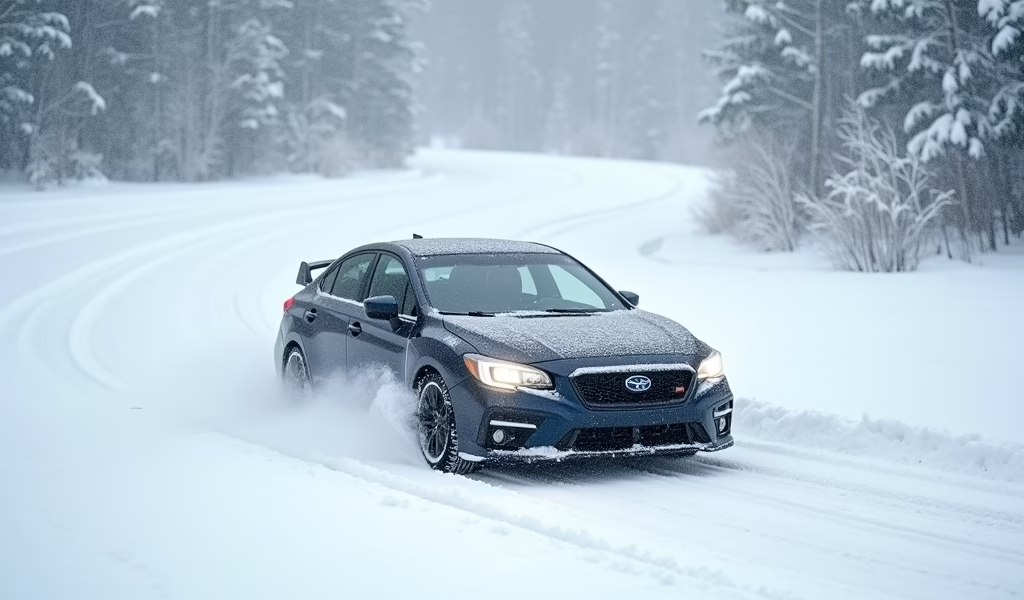Overview
Front-wheel drive vehicles perform well in snow thanks to natural weight distribution over the drive wheels, though they have limitations when climbing steep hills or in deep snow. For optimal winter performance, FWD vehicles should be equipped with proper winter tires and driven with specific techniques including gentle acceleration, maintaining momentum on hills, and proper weight distribution.
Table of Contents
- Understanding Front-Wheel Drive in Winter Conditions
- How FWD Compares to Other Drive Systems in Snow
- The Advantages of Front-Wheel Drive in Snowy Conditions
- Limitations of Front-Wheel Drive on Snow and Ice
- 5 Essential Tips for Driving Your FWD Vehicle in Snow
- The Critical Importance of Winter Tires for FWD Vehicles
- Snow Driving Techniques Specific to Front-Wheel Drive
- Conclusion
- Frequently Asked Questions
Understanding Front-Wheel Drive in Winter Conditions
Is front wheel drive good in snow? As a mechanic who’s helped countless drivers prepare for winter, I can tell you that front-wheel drive (FWD) vehicles can actually perform quite well in snowy conditions, though they do have their limitations. The fundamental design of FWD places both the engine and transmission over the drive wheels, creating natural weight distribution that aids traction when roads get slippery.
Unlike rear-wheel drive cars that tend to fishtail on icy roads, FWD vehicles typically offer more predictable handling in winter weather. The front wheels are responsible for both steering and propelling the vehicle forward, which creates a natural pulling effect that helps maintain directional stability when accelerating on snow-covered roads.
However, successfully navigating winter in a front-wheel drive car isn’t just about the drivetrain – it’s about understanding how to work with your vehicle’s strengths and compensate for its weaknesses. In this comprehensive guide, we’ll explore everything you need to know about how FWD compares to AWD and other drivetrains when the snowflakes start falling.
How FWD Compares to Other Drive Systems in Snow
When we talk about winter driving performance, it helps to understand how front-wheel drive stacks up against alternatives like rear-wheel drive (RWD), all-wheel drive (AWD), and four-wheel drive (4WD). Each system has distinct characteristics that affect handling in snowy conditions.
Front-wheel drive offers a significant advantage over rear-wheel drive in snow. With RWD vehicles, the rear wheels push the car forward while the front wheels handle steering only. This division of labor often results in less stability on slippery surfaces, as the driving force comes from wheels with less weight over them. By contrast, FWD combines steering and propulsion in the wheels bearing the engine’s weight, creating better initial traction.
All-wheel drive and four-wheel drive systems do outperform FWD in terms of acceleration and climbing ability on snow. By distributing power to all four wheels, these systems maximize available traction. According to Consumer Reports’ winter testing, AWD vehicles can accelerate nearly twice as quickly on snow compared to their FWD counterparts.
However, it’s worth noting that when it comes to braking, all drivetrain types are essentially equal. Your ability to stop safely on snow and ice depends almost entirely on your tires and braking technique, not whether you have FWD, AWD, or 4WD. This reality often surprises drivers who assume their advanced drivetrain provides superior stopping power.

The Advantages of Front-Wheel Drive in Snowy Conditions
Front-wheel drive offers several distinct advantages when navigating through winter wonderlands. Understanding these benefits helps you capitalize on your vehicle’s natural strengths when facing challenging road conditions.
First, the weight distribution in FWD vehicles naturally enhances traction. With the engine and transmission sitting directly over the drive wheels, you get better grip right where you need it most. This extra weight pressing down on the front tires helps them bite into snow more effectively, particularly when starting from a stop or climbing gentle inclines.
Another key advantage is the pulling motion created by FWD systems. Rather than pushing from behind (as in RWD), your car literally pulls itself through snow, which tends to create more predictable handling characteristics. This pulling action makes it easier to recover if you begin to slide, as gentle acceleration can help straighten the vehicle rather than worsening a skid.
FWD vehicles typically offer better fuel economy than their AWD counterparts, too. According to the U.S. Department of Energy, the simpler drivetrain design means less weight and mechanical drag, which translates to better efficiency. In winter conditions when fuel economy often drops anyway, this efficiency advantage becomes even more valuable.
Finally, FWD vehicles generally cost less to purchase and maintain than AWD or 4WD alternatives. With fewer components in the drivetrain, there’s simply less that can break or require service. For many drivers, this cost-effectiveness makes FWD a practical choice that performs admirably in moderate winter conditions when equipped with the right tires.
Limitations of Front-Wheel Drive on Snow and Ice
While front-wheel drive performs admirably in many winter scenarios, it does have limitations you should be aware of. Recognizing these constraints helps set realistic expectations and allows you to develop strategies to overcome them.
The most significant limitation appears during acceleration on steeper hills or in deeper snow. When accelerating uphill, weight naturally transfers toward the rear of the vehicle, reducing the load on those crucial front drive wheels. This weight shift can dramatically decrease available traction precisely when you need it most, sometimes resulting in spinning wheels and limited forward progress.
Another challenge occurs during cornering in slippery conditions. FWD vehicles are naturally prone to understeer – the tendency for the car to continue straight ahead rather than follow the intended turning path. This characteristic becomes more pronounced on snow and ice, requiring drivers to reduce speed significantly before entering turns.
Front-wheel drive also struggles with what mechanics call “torque steer” – the tendency for high-powered FWD vehicles to pull to one side during hard acceleration. This effect becomes more noticeable on uneven or slippery surfaces, making smooth power delivery crucial in winter conditions.
Finally, FWD vehicles typically have less ground clearance than SUVs or trucks with 4WD systems. This lower stance can become problematic in deeper snow, where the vehicle may bottom out or experience resistance from snow buildup beneath the chassis. If you regularly face significant snowfall, this limitation might require more careful route planning to avoid getting stuck.
5 Essential Tips for Driving Your FWD Vehicle in Snow
Successfully navigating winter in a front-wheel drive car requires some specific techniques and preparations. These five essential tips will help you maximize your vehicle’s performance and safety when the roads turn white.
- Install proper winter tires – No single upgrade improves winter performance more dramatically than dedicated winter tires. These specialized tires use rubber compounds that remain flexible in cold temperatures and feature tread patterns designed specifically for snow and ice traction. Choosing the right tires can improve your FWD vehicle’s winter capability by 30-40% according to independent testing.
- Add weight to the rear – Strategically adding 100-150 pounds of weight over the rear axle can improve overall traction by creating a more balanced weight distribution. Sand bags or winter emergency kits placed in the trunk help press all four tires more firmly against the road, improving stability and reducing the tendency to fishtail.
- Master gentle throttle control – Smooth, progressive acceleration prevents wheel spin and maintains traction. Practice applying throttle gradually, especially when starting from a stop. Modern FWD vehicles often include traction control systems that help manage power delivery, but developing a gentle touch with the accelerator remains crucial.
- Increase following distance – The standard three-second following distance should be extended to 8-10 seconds on snow-covered roads. This extra space provides the longer stopping distances required on slippery surfaces and gives you more time to react to changing conditions or other drivers’ mistakes.
- Learn proper braking technique – Even with anti-lock braking systems (ABS), proper technique matters. Apply brakes firmly but not suddenly, and begin slowing earlier than normal. If your vehicle lacks ABS, practice threshold braking – applying maximum pressure without locking the wheels – which requires a sensitive foot and plenty of practice in safe conditions.

The Critical Importance of Winter Tires for FWD Vehicles
I can’t overstate the importance of proper winter tires for front-wheel drive vehicles. While all-season tires might seem adequate, they represent a significant compromise that becomes apparent once temperatures drop below 45°F (7°C). Winter-specific tires transform your FWD vehicle’s capabilities through several critical design elements.
Winter tires use specialized rubber compounds that remain pliable in freezing temperatures. This flexibility allows the tire to conform to road surfaces and maintain grip when all-season compounds become stiff and less effective. The difference is immediately noticeable in braking performance, where stopping distances on snow can be reduced by 30-40% with proper winter rubber.
The tread pattern on winter tires features deeper grooves with specific designs to channel snow, slush, and water away from the contact patch. Many winter tires also incorporate tiny slits called sipes that create thousands of additional biting edges to grip snow and ice. These design elements work together to dramatically improve traction in conditions where all-season tires simply slide.
For front-wheel drive vehicles specifically, installing winter tires on all four wheels is essential – not just the drive wheels. While the front tires provide propulsion, the rear tires are crucial for stability and preventing fishtailing during braking and cornering. Running different tire types front and rear creates dangerous handling imbalances that can induce spins on slippery surfaces.
Winter tires do represent an additional investment, but safety research from NHTSA consistently shows they provide the single greatest improvement in winter driving safety. Moreover, using dedicated winter tires during cold months extends the life of your standard tires, often making the long-term cost difference minimal while significantly improving safety margins.
Snow Driving Techniques Specific to Front-Wheel Drive
Mastering certain driving techniques specifically suited to front-wheel drive can dramatically improve your winter driving experience. These approaches capitalize on the unique characteristics of FWD to maintain control in challenging conditions.
When starting from a stop on slippery surfaces, gentle acceleration is key. Apply throttle progressively, allowing the front wheels to grip rather than spin. If you notice wheel spin developing, back off the throttle slightly rather than pressing harder – this allows the tires to regain traction instead of digging themselves deeper into spin cycles.
For climbing hills in FWD vehicles, momentum becomes your ally. Build appropriate speed before reaching the incline and maintain steady, gentle throttle while climbing. Avoid stopping midway up snowy hills if possible, as starting again on an incline represents one of the most challenging scenarios for front-wheel drive vehicles.
When navigating corners on snow, complete your braking before entering the turn. Once committed to the corner, maintain a steady throttle position rather than lifting off completely, which can unsettle the car. This technique, known as “maintenance throttle,” helps maintain weight distribution and maximizes available traction through the turn.
If your FWD vehicle begins to understeer (push straight ahead when turning), resist the instinct to apply more steering input. Instead, gently reduce throttle while maintaining your steering angle, which transfers more weight forward and can help the front tires regain grip. Using weather compensation mode on vehicles equipped with this feature can also help maintain stability in challenging conditions.
For descending hills safely, engine braking becomes particularly valuable in slippery conditions. Downshift to a lower gear before the descent begins, allowing engine compression to help control your speed with minimal brake application. This technique reduces the risk of skidding that can occur with heavy braking on steep, slippery inclines.
Conclusion
So, is front wheel drive good in snow? The answer is a qualified yes – with proper preparation and technique, FWD vehicles can perform quite admirably in winter conditions. The natural weight distribution over the drive wheels provides inherent advantages for initial traction, while the pulling action of front-wheel drive creates predictable handling characteristics that many drivers find confidence-inspiring.
However, maximizing your front-wheel drive vehicle’s winter performance requires some investment and knowledge. Quality winter tires represent the single most important upgrade, dramatically improving all aspects of winter performance regardless of drivetrain type. Combining these tires with specific driving techniques – gentle throttle application, proper weight distribution, and maintaining momentum on hills – allows FWD vehicles to handle most winter driving scenarios safely and effectively.
While all-wheel drive and four-wheel drive systems do offer advantages in certain extreme conditions, a properly equipped and skillfully driven front-wheel drive car remains a practical, efficient choice for the majority of winter drivers. By understanding your vehicle’s capabilities and limitations, you can navigate winter roads with confidence, regardless of what drivetrain powers your daily commute.
Remember that the best winter vehicle is ultimately the one driven with proper respect for conditions and good judgment about when to stay home during truly severe weather. No drivetrain can overcome physics, but with the right preparation and techniques, your front-wheel drive vehicle can safely handle most winter driving challenges you’re likely to encounter.
Frequently Asked Questions
Is FWD better than RWD in snow?
Yes, FWD is generally better than RWD in snow because the engine weight sits directly over the drive wheels, providing better traction. FWD also creates a pulling motion that’s more predictable and easier to control than RWD’s pushing action when roads are slippery.
Can I use all-season tires on my FWD car in winter?
All-season tires can handle very light snow but significantly compromise traction in true winter conditions. Dedicated winter tires improve FWD performance by 30-40% in snow and ice and are strongly recommended for regular winter driving.
Do I need snow chains on my FWD vehicle?
Snow chains are only necessary for FWD vehicles in extreme conditions or where legally required. Quality winter tires are sufficient for most normal winter driving, though chains provide additional traction in deep snow or ice.
Why does my FWD car struggle to climb snowy hills?
When climbing hills, weight naturally transfers to the rear of the vehicle, reducing pressure on the front drive wheels. This weight shift reduces available traction precisely when you need it most, making hills particularly challenging for FWD vehicles.
Is AWD worth the extra cost over FWD for winter driving?
AWD provides better acceleration and hill-climbing ability in snow but offers no advantage in braking. For most drivers who face moderate winter conditions, a FWD vehicle with proper winter tires often provides sufficient capability at lower cost and with better fuel economy.

